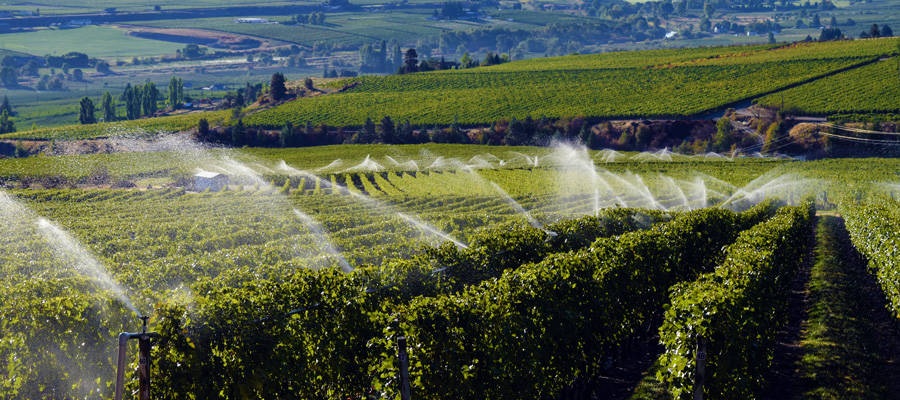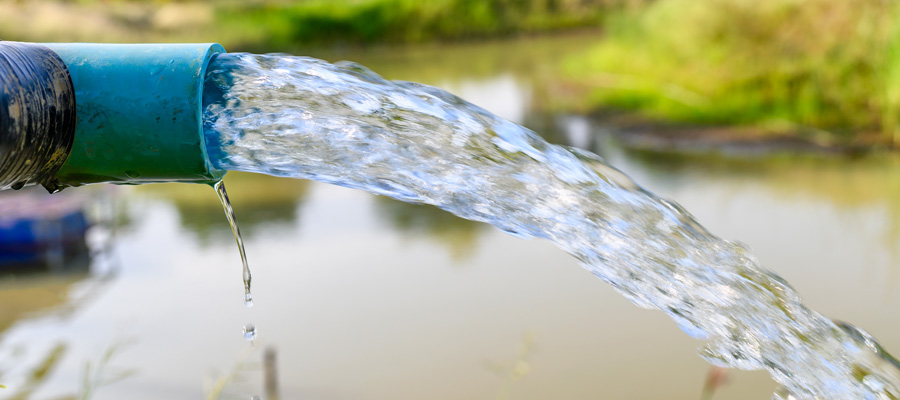Government must do more than shuffle chairs to solve BC’s water woes

British Columbia’s Ministry of Forests was always a poor choice to manage the province’s water resources—and it showed.
So it was fitting in October that the government decided after years of being urged to do so to transfer that power to the Ministry of Water, Land and Resource Stewardship.
But shunting public servants between ministries will, in and of itself, do nothing.
Real change requires leadership from the top down, beginning with clear instructions from the premier to Nathan Cullen, the minister now in charge, and from Cullen to his deputy and assistant deputy ministers and to the senior public servants who report to them.
Real change also means empowering public servants to effectively carry out their work.
It has been seven long years since the Water Sustainability Act, British Columbia’s first major water legislation in a century, came into force. One would assume that enabling legislation would have been brought in at that time. However that has yet to happen, meaning public servants still do not have the compliance and enforcement tools they need to do their jobs effectively.
But before saying more about the specific changes needed to set us on a better course, it is worth considering the extent that this government—and those before it—failed on the water file starting with the floods that crippled the province two years ago.
Where was the warning?
It’s the job of BC’s River Forecast Centre (RFC) to assess weather data, snowpack levels and water depths and to alert British Columbians when it believes there is a flooding risk.
Yet as came to light shortly after the floods of November 2021, personnel at the RFC appeared to be two to three days late in issuing flood warnings, which meant that thousands of home and business owners had almost no time to move things out of harm’s way before the waters rose.
Then there’s the matter of the landslides that wiped out bridges and sections of several highways during the torrential rains that November.
One of those landslides was on Highway 99 where many motorists were trapped on the road due to another landslide ahead of them. Five people were killed by the rush of broken trees, earth and rock that swept down upon them in a thunderous roar, including Anita and Mirsad Hadzic, whose two-year-old daughter was left without a mother and father.
In the slide’s aftermath, geoscientist Pierre Friele and engineer Calvin VanBuskirk independently concluded that the deadly slide began at an old logging road that had not been properly decommissioned.
Failure to restore natural water flows on the slope transected by that old road virtually guaranteed that with enough rain over time the slope would fail with potentially deadly results.
Then there’s Merritt, the city of 7,000 people that experienced significant damage when sections of its dikes failed during the intense rains triggering an emergency evacuation. Ministry officials knew for years that those dikes were structurally unsound, yet they failed repeatedly in the lead-up to the disaster to compel the city to take action to fix that critical infrastructure.
In all three cases, the buck stopped with public servants in the Ministry of Forests who had responsibility for flood forecasting, logging roads and dike maintenance. This Ministry was a poor choice to be handling the file given its historic focus on logging, an activity that can profoundly alter water flows and water quality in the valleys where forests are logged away.
A dismal record
Sadly, the multiple failures surrounding November 2021’s floods are not isolated events.
Consider the following:
- With passage of the Water Sustainability Act, all groundwater users in the province were required to apply for licenses to continue using their water. Having failed to adequately communicate to thousands of individuals and businesses (many of them farmers) that they must apply for licences or risk losing their rights of access to water, the ministry—and now a new ministry—faces a predicament. Does it turn a blind eye to rampant, illegal water withdrawals? Or does it begin the costly, time-consuming process of prosecuting water users who didn’t apply for licences?
- Under BC’s Dam Safety Regulation, all dams above a certain height and/or that impound enough water must conform to a set of regulations designed to protect public health and safety and the environment. Yet under the watch of the Ministry of Forests and the Oil and Gas Commission, dozens of earth-fill dams were built in violation of those regulations without the required permits first being obtained. All of those unpermitted and potentially unsafe structures were built to impound water used in earthquake-inducing natural gas industry fracking operations. Yet not one of the companies that built those dams in violation of numerous provincial regulations were ever sanctioned for their actions. That includes one company, Petronas, that built roughly half of the unpermitted dams, including one that was as tall as a seven-storey building.
- Then there’s the Ministry of Forest’s lack of rigorous oversight of Site C, the massively over-budget hydroelectric dam on the Peace River. On at least two occasions, engineers and water officials with the ministry were told of significant geotechnical problems at the dam yet in a matter of hours they chose to issue construction permits to BC Hydro with allowing it to embark upon costly fixes rather than pausing the project and ordering BC Hydro to provide more information. So much for government oversight of the most-expensive provincially funded infrastructure project in BC’s history.
These and other signs of dysfunction underscore the need for significant change. As a Tyee reader commented following disclosure of the provincial government’s inept handling of the dike and flooding files:
“The people and communities within BC that suffer because of these failures, and that will suffer from future failures, need something better. Perhaps BC’s water management need[s] to be disassembled and rebuilt.”
A new direction
With the announced transfer of water responsibilities, the Ministry of Water, Land and Resource Stewardship inherits powers to issue new water licences, order halts to water withdrawals due to droughts, devise new flood strategies, regulate dams, dikes and utilities, protect water sources and protect fish habitat among other things.
But having such powers and responsibilities and exercising them are two different things. The Ministry of Forests had such powers. But for whatever reasons, it didn’t exercise them.
One place to start would be for the premier to issue Nathan Cullen a new mandate letter that clearly spells out what is to be delivered on the water file. It would then fall to his deputy minister, Lori Halls, to implement the plan.
An immediate objective should be to appoint a new water comptroller. Incredibly, given all the chaos unleashed by the floods of 2021, the province has been without someone filling its top water job for more than a year.
Ideally, the new comptroller should be a professional engineer with a solid understanding of hydrology and civil works including dams and dikes.
Ted White, the last comptroller was not an engineer. But the two comptrollers before him —Jim Mattison and Glenn Davidson—were and there was an understanding within government that the comptroller’s position was best served by someone steeped in the engineering discipline.
Halls should also be instructed to ensure that staff working in the ministry have not only the powers they need to compel water users to comply with all relevant water laws but that they will be expected to exercise those powers to the fullest when water laws are violated.
Enforcement like it matters
Currently, when a company breaks a major water law, compliance and enforcement staff have only two options: issue a ticket, which sets the offender back the cost of a traffic offence or attempt to pursue criminal charges that may well not proceed to trial.
Giving ministry staff compliance and enforcement powers to issue administrative penalties in the tens or even hundreds of thousands of dollars would send a clear signal to water users that violating major provincial water laws can have serious consequences.
The new ministry responsible for water should also regulate all water users without exception. And Halls should be tasked with ensuring that is the case. Currently, there is a notable gap in that regard.
The fossil fuel industry in the province is treated separately from all other water users in BC.
The BC Energy Regulator, formerly the BC Oil and Gas Commission, allocates all water resources to its client companies. This is the same regulator directly responsible for many of the fracking dams built in violation of numerous provincial regulations, a regulator that shows many signs of being captured by the very industry it regulates.
There is no justification for fossil fuel companies playing by one set of rules while everyone else plays by another, especially when that industry is poised for an unprecedented ramp-up in water use as new natural gas wells are drilled and will later be fracked to produce gas for the soon-to-be-complete Canada LNG facility, a massive liquefied natural gas processing plant in Kitimat.
After the flood
Lastly, there is the debate of whether or not the provincial government should be assuming full responsibility for things like flood planning and preparedness and critical flood protection infrastructure.
The Union of BC Municipalities, which represents all municipal governments in the province, has been on record for years saying that local governments have neither the funds nor the capacity to address the challenge.
The terrible situation that unfolded in Merritt two years ago is a case in point. This was a municipality that knew it had deficient dikes but did not, for a lack of funds, do anything about it. Meanwhile, the provincial government knew all along about the problems but did nothing about them.
“We need a provincial diking authority that has teeth, that has properly trained people— hydrologists, possibly engineers, that are able to inspect these dikes yearly and their reports are taken seriously,” Merritt’s mayor, Michael Goetz, says.
Clearly, the time has come for substantive policy changes.
To continue business as usual risks future disasters that may result in death, injury and environmental damage, resulting in tragedy for families and communities and huge financial costs because of lost or damaged property and infrastructure.
There is also the growing risk to the provincial government of legal action. Currently, the government is named in a class action lawsuit related to the extensive flooding at Sumas Prairie near Abbotsfordand it faces legal action from the deaths on Highway 99.
The shuffling of provincial water staff from one ministry to another provides an opportunity to begin anew with long overdue changes. Let us hope it’s not an opportunity missed.



